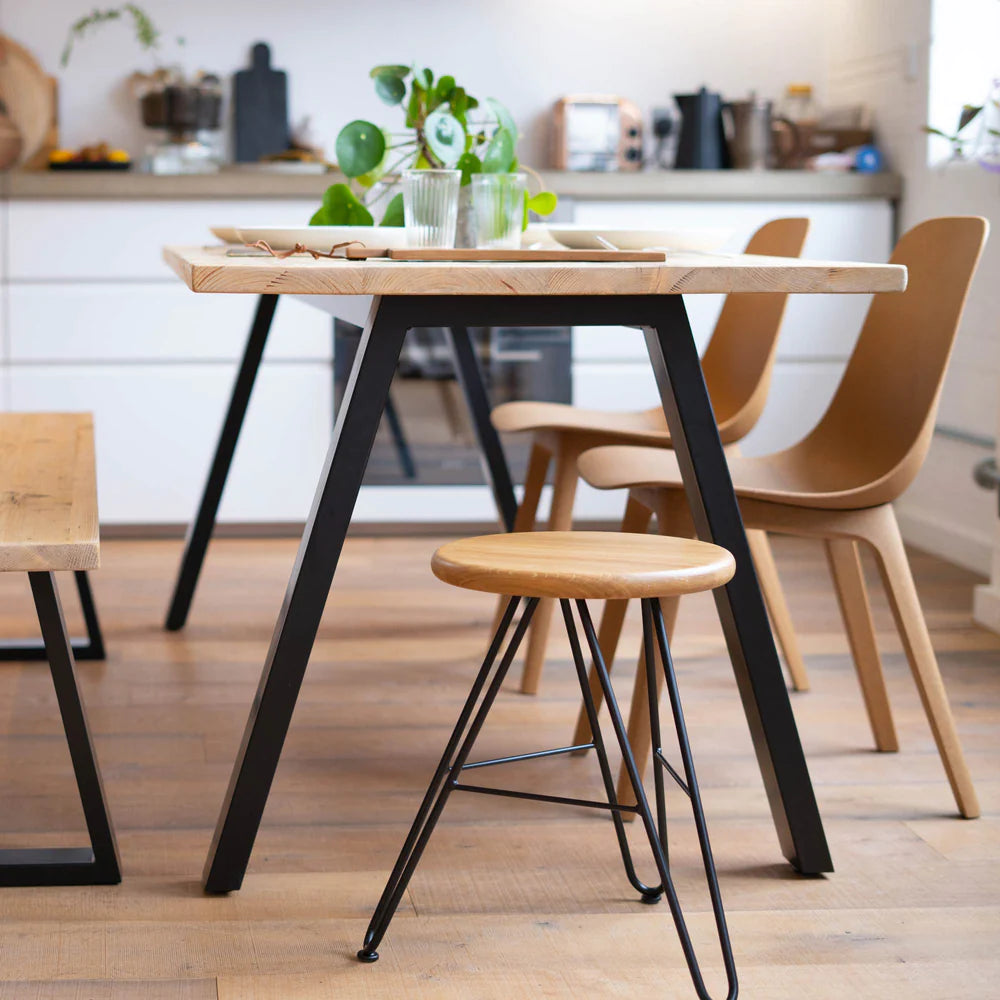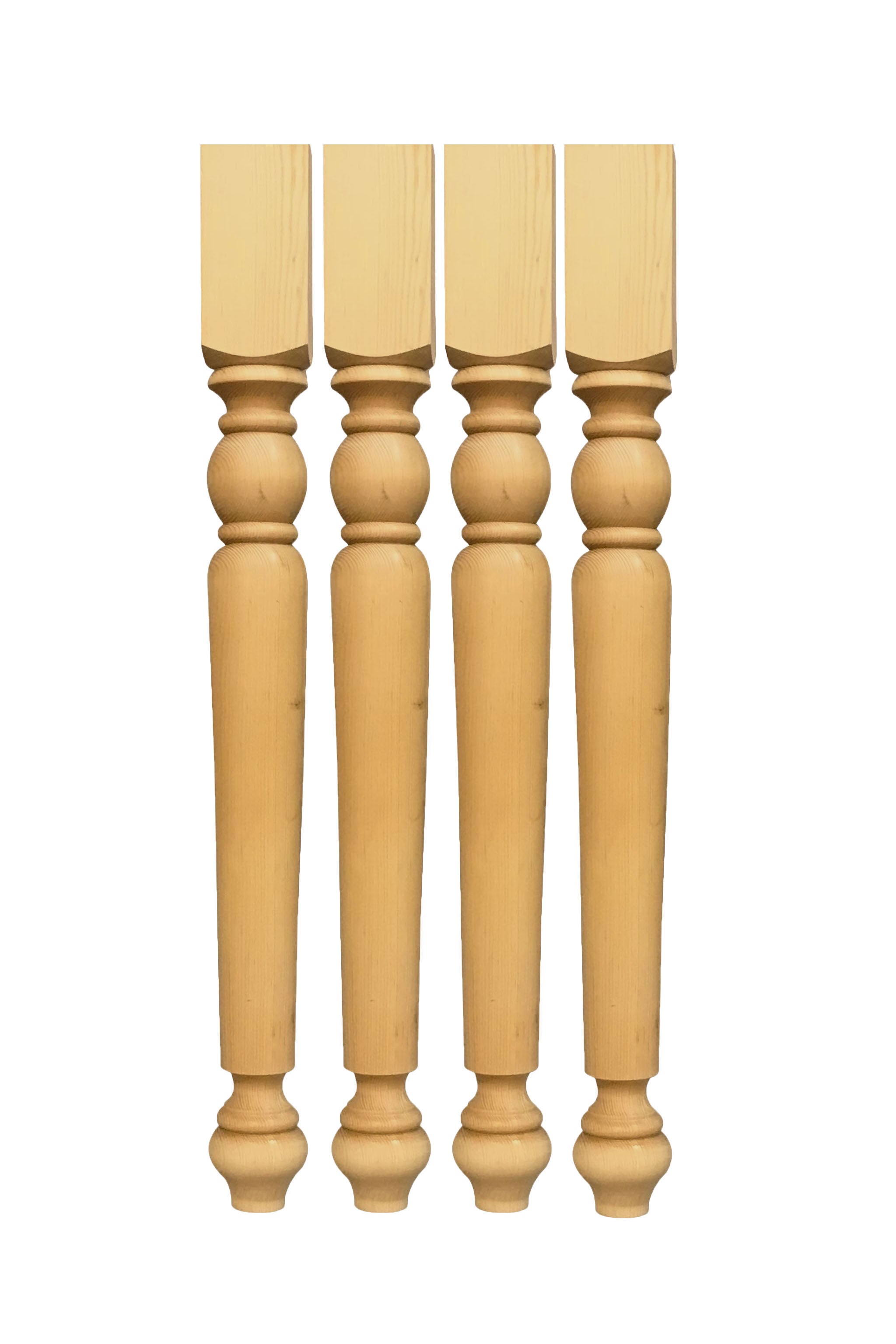Add Stamina and Beauty Making Use Of Solid Dining Table Legs Wood Pieces
Discovering the Various Kinds of Dining Table Legs Timber for Your Dining Space
The selection of dining table legs timber can exceptionally affect both the aesthetic and practical high qualities of your eating space. Strong timber choices, such as oak and walnut, offer a timeless look with unmatched sturdiness, while engineered timber options offer cutting-edge designs that simulate the richness of all-natural grains. Additionally, the growing fad of recovered timber introduces a lasting element that interest environmentally mindful customers. As we check out these numerous options, it ends up being important to think about not just the visual charm yet also the useful effects of each material option. What variables should guide your decision?
Solid Wood Options

Moreover, solid wood is renowned for its toughness and longevity. Unlike engineered materials, solid wood is much less susceptible to bending and damages over time when properly kept. This makes it a perfect option for households or those that regularly organize celebrations. Each item of strong timber is unique, showcasing individual qualities that contribute to the appeal and personality of the eating table.
Additionally, strong wood can be finished in various ways, varying from natural oils to discolored finishes, allowing property owners to personalize their furniture to match their decoration. In summary, selecting solid timber for dining table legs not only guarantees architectural stability but also enhances the aesthetic charm of the dining location, making it a rewarding financial investment for any home.
Engineered Timber Alternatives

Plywood, constructed from multiple layers of timber veneer, is especially solid and steady, making it an exceptional choice for eating table legs. Its layered composition permits it to endure modifications in moisture and temperature better than typical solid timber. MDF, on the other hand, supplies a smooth surface for paint or veneering, allowing developers to accomplish a sleek look while keeping structural honesty.
Particleboard, commonly used in economical options, supplies decent stamina and is light-weight, making it simpler to handle. Nevertheless, it might not be as durable as plywood or MDF. It is crucial to take into consideration the desired usage and preferred visual when selecting engineered timber alternatives. These materials not just boost the performance of eating rooms but likewise enable greater design adaptability, making sure that standard and modern designs can exist side-by-side harmoniously.
Reclaimed Timber Includes
Redeemed timber supplies a distinct mix of sustainability and character, making it an increasingly popular selection for eating table legs. Sourced from old barns, manufacturing facilities, and various other structures, reclaimed wood embodies a background that brand-new materials simply can not reproduce. Each item brings its own story, noted by unique imperfections, knots, and differing grain patterns, which add to a table's special aesthetic appeal.
In addition to its aesthetic appeal, reclaimed timber is an eco-friendly choice. By repurposing formerly utilized materials, it reduces the need for new lumber, thus aiding to reduce and conserve woodlands waste. This aligns with an expanding consumer choice for sustainable practices in furniture.
Furthermore, redeemed wood is typically more long lasting than newly harvested wood due to its age. The natural drying out procedure that reclaimed timber undergoes cause a denser and stronger material, making it much less vulnerable to bending and splitting. This improves the long life of dining tables, permitting them to hold up against the roughness of daily usage.
Softwood vs. Hardwood
When choosing dining table legs, comprehending the distinctions in between softwood and wood is important for accomplishing both visual and useful goals. They usually display an even more rustic appearance, making them suitable for country-style or casual dining spaces.
On the other hand, hardwoods, sourced from deciduous trees like cherry, oak, and maple, are renowned for their thickness, toughness, and durability. The intricate grain patterns and rich hues of hardwoods give a timeless and innovative allure, making them more tips here excellent for official eating settings. While hardwoods tend to be more expensive and larger, their strength against wear and tear often justifies the financial investment.
Inevitably, the selection between softwood and hardwood for eating table legs should line up with your layout vision, usage demands, and spending plan, making certain that your eating space reflects your individual style while continuing to be useful gradually.

Therapies and coatings
The aesthetic appeal and longevity of dining table legs can be considerably improved through various finishes and therapies. These procedures not just secure the wood from damage but additionally boost its look, enabling it to match diverse interior designs.
One typical treatment is staining, which penetrates the timber and improves its natural grain while adding shade. Spots offer a rich, elegant appearance, making it possible for home owners to match their furnishings with existing design. Conversely, clear finishes such as polyurethane or varnish develop a protective layer without modifying the wood's initial hue, ensuring resilience against damage.
Furthermore, natural oils, like tung or linseed oil, nurture the wood and supply a subtle luster, all while being eco-friendly. These oils permit the surface area to breathe, protecting against wetness buildup and possible bending.
For those seeking a rustic beauty, distressed or weather-beaten finishes can be put on create an aged appearance, including character to the item. Eventually, the selection of surfaces and therapies depends on individual choice, preferred visual appeals, and the specific wood kind, making it important to take into consideration these elements when picking table legs for your space.
Final Thought
Solid woods, engineered options, and redeemed alternatives each deal distinctive benefits, providing to numerous choices and demands. Inevitably, the choice of wood type should align with desired style, resilience, and environmental considerations, enhancing the general dining check my site experience.
The choice of dining table legs wood can profoundly impact both the visual and useful high qualities of your dining space - Dining Table Legs Wood. Solid wood options, such as oak and walnut, offer a traditional look with unmatched resilience, while engineered timber choices use ingenious layouts that mimic the richness of all-natural grains. Solid wood supplies a classic high quality that can raise the overall layout of an eating area. Each piece of strong wood is unique, showcasing specific features that add to the Continue charm and personality of the dining table
Additionally, reclaimed timber is typically much more durable than freshly gathered wood due to its age.